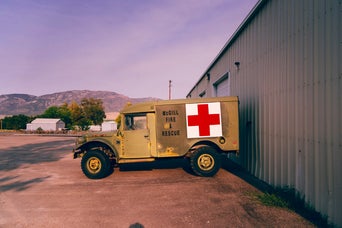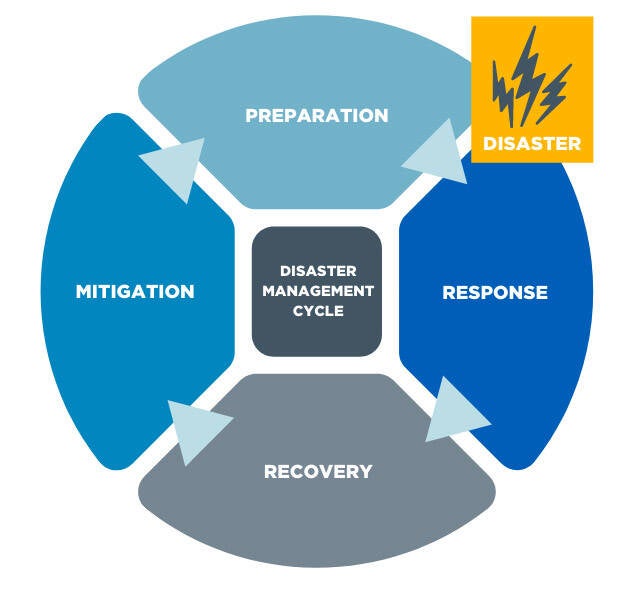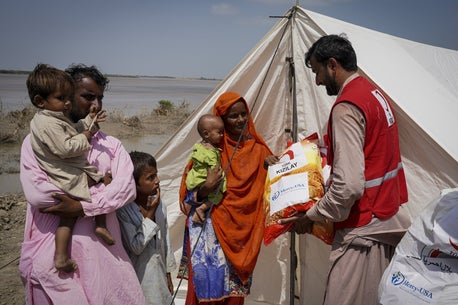What is a disaster?
An event which causes damages to infrastructure or a loss of life.
- Natural Hazards such as flooding, earthquakes, volcanic eruptions and drought are commonly associated with disasters as these types of event can bring serious losses of life and damage to countries and local communities.
- Although natural hazards are most commonly associated with disasters other events such as chemical or oil spills can also be classed as disasters.
The top ten countries which are most affected by disasters are all developing countries who require the most assistance when disasters strike (Ahmed 2011).
On average 367 disasters happen each year due to natural hazards - Most commonly FLoods and Storms (UN office for Disaster Risk Reduction 2020) .
Governments across the world continue to fund disaster relief organisations each year - £3.1 million were given by the UK government in 2021 towards this (Anonymous 2021).
Developing countries are impacted approximately 20 times more than developed countries in built up areas.
How Does Aid Work?
There are various different kinds of aid ranging from Disaster relief aid, military aid, financial aid and medical aid. Disaster relief aid (the topic focused on) is comprised of different types of resources. This can be in the form of financial aid, medical supplies to treat wounded casualties, tools and equipment to rescue vulnerable people and to clean up debris and also shelter such as pop up villages made of tents for those who have lost their homes. Each of these areas of disaster aid are crucial in supporting a country or community in minimising the disasters impact on the area. Aid can come from various different sources such as Governments of other countries and Non-Governmental Organisations (NGOs) for example Oxfam or the Salvation Army. The international red cross are neither a governing body nor a NGO they are a private organisation purely dedicated to humanitarian aid across the world. In the case of a disaster the red cross linked to the given area is mobilised and they begin to support human welfare.


Disaster Aid International (DAI) are project run by the rotary club. This means Rotary clubs in developed countries donate money to DAI so that they can operate. DAI uses volunteers instead of employing people. This means that they do not go into areas of ongoing conflict. When a country is in need of aid DAI don't just go into the country and help people, they meet up with officials and determine areas which need most help and also what sort of aid is best for them. For example some areas may need medial aid where as some may need aid relating to the rebuilding of infrastructure.
SO, where does my money go?
If you're wondering where your money goes and what it gets used for then read on. When you donate to a cause such as DAI you're money goes into various different areas. The majority of money goes into the physical resources needed to help. However some money also goes into other sectors such as the training of staff and volunteers, transport costs such as flights for workers to get to where they need to be. Your money may also end up in education schemes for those that need informed on disasters and safety.

Four stages to disaster aid
The diagram below from compassion international shows the disaster management cycle. There are four sectors to disaster relief aid. The four sectors are preparation, response, recovery, and mitigation (Nolz et al. 2011). The preparation stage includes actions taken before a disaster occurs. In the context of aid work this can relate to education locals on what to do in the case of a disaster, but it can also involve training aid workers and developing action plans. The response stage is the most commonly known stage. This is often seen on news channels where people may be rescuing injured citizens stuck underneath buildings or treating peoples' injuries. Recovery relates to repairing damage infrastructure after the response stage is coming to an end. This is to help house people and open businesses again to get the area back up and functioning. The mitigation stage is one of the less thought of stages. It is arguably one of the most important stages. This is because it is the stage in which building codes are put in place and disaster mitigation methods are reassessed and potentially change. This stage can lead to less impact on the area if a disaster reoccurs (Joanne Linnerooth-Bayer et al. 2005a).

How aid Can benefit a country
Within developing countries, houses have the most value to families. When disasters occur, housing is the most easily impacted and the number of houses destroyed and damaged is the largest portion of damaged assets within society. This is due to poor building quality and also the lack of regulations implemented by the government. As a result of this when a disaster damages a house or destroys it, then a person's largest asset is completely lost. Commonly insurance doesn't cover natural hazards, so people are unlikely to get any money back. With Aid people would be able to rebuild for a lot less money as both financial donations and resource donations can go directly to people in need. This would mean people are able to stay safe in their homes, have a more positive attitude in trying times and potentially get back to work as soon as possible. By going back to work people would be contributing to the local and wider economy of the area impacted and therefore the area can build back quicker and more effectively.

If disaster aid was implemented more heavily in the pre-disaster stages, then the country may be less impacted by the disaster. For example, if a country has implemented mitigation strategies like sea walls for tsunamis or planning measures when considering where to build near volcanoes then this would reduce the amount of damage done to infrastructure. Effective planning measures would also result in the potential for less deaths and injured civilians as the country can be more prepared (Joanne Linnerooth-Bayer et al 2005b.). The country could be more prepared by developing an action plan for when a hazard occurs. The preparedness stage could also involve education for those who are unsure of what to do in the event of a natural hazard. In developing countries education levels can be much lower than that of developed countries. As a result of effective education schemes that don't have to be overly complex people can then be safer.

issues surrounding aid
Most disaster aid is given to countries after an event. This causes issues around prevention of a disaster as governments don’t put in place preventative measures. If a developing country is more prepared for a disaster and then when a disaster occurs the damage caused is less and therefore the country gets less money to assist in the response and recovery stages. When less money is provided to a country in need then the country has to spend more of its own money on the recovery stage which is the most costly stage (Kousky and Shabman 2012). In the developing world this could have greater impacts on the economy as the money spent could have been used elsewhere such as in the development of the country.

A social issue surrounding disaster aid is the cultural insensitivity. During the 2005 Pakistan earthquake many international aid workers travelled to areas in need. At first those that were in need of help were appreciative for any help they could get. However this changed as people began to get the help they needed. This was due to international aid workers not respecting the strict rules of Pakistan such as the dress code and sleeping arrangements. In Pakistan it is expected that men and women wear long clothing and women wear head scarves. However this was not the case for some aid workers such as the Cubans who went to help. They wore t-shirts and shorts and also slept in tents with both men and women inside which is frowned upon within Pakistan. This caused issues as locals began to get upset as people who are supposed to be helping them are not respecting their cultural norms which is highly regarded in the country. What was more surprising was that the national aid workers particularly Pakistani women were being less respectful than the international workers. For a lot of women this was their first time leaving their homes or local communities so they saw this as an opportunity to party, listen to loud music late at night and play sports outside. All of which are against the cultural norms of the area and this was also seen as disrespectful as there were many lives lost and displaced people who saw no positives to the disaster. There was more of an upset towards national workers as international aid workers may not fully understand the cultural practices of the country they have travelled to so they were appreciated more. If people are culturally insensitive then the chances of getting a positive result from their work is much less (Wilder and Morris 2008).
Create Your Own Website With Webador